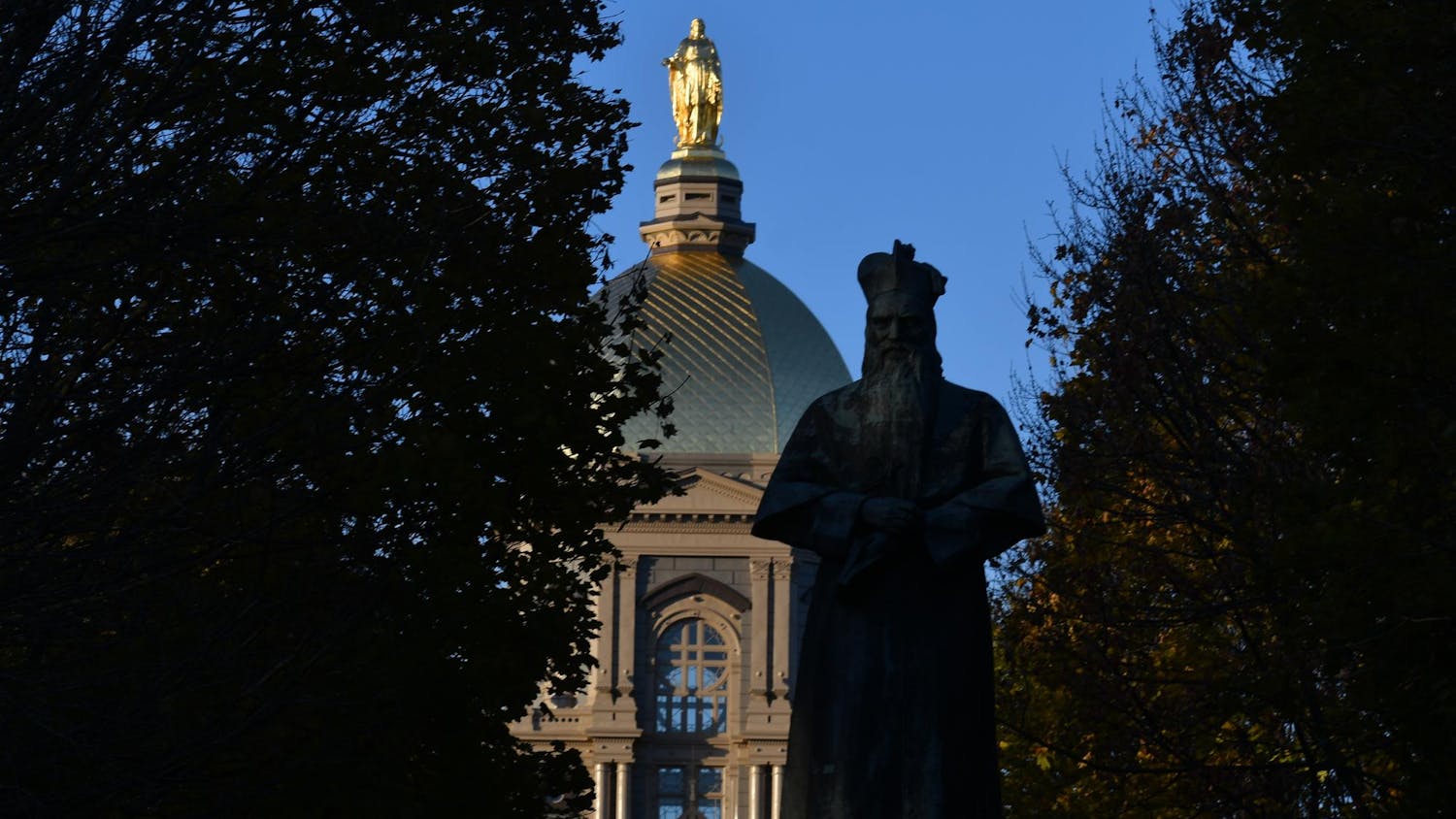In the midst of a pandemic that has disproportionately affected Latino communities and in light of the upcoming census and general election, Notre Dame’s celebration of National Hispanic Heritage Month offers opportunities to celebrate the more than 1,000 University undergraduates who self-identify as Hispanic or Latino.
Sept. 15 marked the beginning of this year’s Hispanic Heritage Month in the United States. Luis Fraga, director of the Institute for Latino Studies (ILS), said this celebration aims to recognize the contributions of Hispanic and Latino communities in the nation’s history and society.
“The idea behind it is, let’s celebrate the good things as a way to remember how we can make things even better for these communities in the country,” Fraga said.
The official celebration of Hispanic heritage in the United States began in 1968 under President Lyndon B. Johnson. Twenty years later, President Ronald Reagan expanded it to a 30-day event spanning Sept. 15 to Oct. 15.
The start date was chosen because it coincided with the commemoration of the independence of five Latin American countries: Costa Rica, El Salvador, Guatemala, Honduras and Nicaragua. In the following days, the independence of other Latin American countries is celebrated too, such as Mexico, Chile and Belize.
About two or three years ago, Fraga said the ILS decided to “lead the University” in recognizing this month. Since then, the ILS has organized a series of events between mid-September and mid-October to celebrate Hispanic and Latinx heritage in Notre Dame and the United States.
This year, the events hosted by the ILS had to be adapted to a virtual platform due to the pandemic. Registration is required to attend most of these events. In them, alumni, professors and guest speakers from different backgrounds will cover broad topics, from art and poetry to gun violence and border issues.
The ILS started their Hispanic Heritage Month event series with a virtual table talk entitled “Latinx Voters in the 2020 Election,” hosted by Fraga and associate professor of political science Ricardo Ramirez. According to the Pew Research Center, a record 32 million Latinos are projected to be eligible to vote in 2020, up from 27.3 million in 2016. The talk is available on the video-sharing platform of Panopto and on the ILS website.
So far, the institute has also hosted a panel discussion Sept. 21 with Michael Nicolas Okinczyc-Cruz, executive director of the Coalition for Spiritual and Public Leadership (CSPL), and senior Kassandra Perez, who interned remotely at CSPL this summer.
The panel, “Latinx Presence and Power: The 2020 Census and Overcoming the Politics of Erasure,” sought to discuss the significance of the census, the obstacles that Latino communities face and what can be done to ensure these communities are counted.
“There’s such a huge impact,” Perez said. “Especially in our Latinx communities, when we don’t fill out the census because the data affects us for the next 10 years.”
Perez emphasized that government funding, the drawing of congressional and state legislative districts, business decisions and seats in the House of Representatives are some of the big decisions made based on the census.
The ILS also hosted a virtual book launch Sept. 22 of “A Homegrown Fairytale,” co-authored by Notre Dame Master of Fine Arts alumna Suzi Garcia (‘15).
The next ILS event for Hispanic Heritage Month will take place Wednesday at 4:00 p.m. Associate professor of Romance languages and literature Marisel Moreno and professor of Romance languages and literature Thomas Anderson will lead a discussion on their online bilingual exhibit, “El Arte al Servicio del Pueblo,” which translates to “Art at the Service of the People.”
The Hispanic Alumni Association (HA of ND) has also planned a panel for Oct. 15, Prisma Garcia (‘09), the vice-chair for HA of ND, said.
The panel seeks to connect students with alumni currently working in fields such as business, nonprofit and academia who will “talk about their life as Latinos at Notre Dame and after,” Garcia said.
“We didn’t want to compete with what [ILS] was already doing,” Garcia said, expressing HA of ND’s support for ILS programming.
Outside of Hispanic Heritage Month, Garcia said HA of ND plans to offer a virtual Spanish mass in the coming months to celebrate Day of the Dead on Nov. 1 and to honor Our Lady of Guadalupe on her feast day Dec. 12, even if virtually.
To celebrate this month, the Multicultural Student Programs and Services (MSPS) office has been posting on its Instagram, Facebook and Twitter accounts “highlighting [L]atinx traditions and people who have contributed to our history that folks may or may not know about,” Yvette Rodriguez, assistant director of programming, said in an email to The Observer.
Last week, MSPS also shared an opportunity with students to attend a SpeakOut webinar with Michael Benitez Jr. on Sept. 17, entitled “Examining Latinidad: At the Crossroads of Race, Culture and COVID-19.” MSPS is also co-sponsoring the Student Union Board’s Oct. 8 movie watch of “McFarland, USA.”
“In general, though, we understand that there are many times other than just within the heritage month that we could be celebrating,” Rodriguez said.
“While the spotlight given to these narratives through heritage months is helpful, it is important to weave them in throughout our education, events and lives at other times too …,” Rodriguez said, “as well as acknowledge the educational opportunity that heritage months offer.”
According to Fraga, “Notre Dame’s original mission was to educate predominantly working-class, predominantly Catholic, immigrant and immigrant-origin” communities who could not get educated elsewhere.
“In focusing on Latinos, Notre Dame is recommitting itself to its original mission,” Fraga said.
University celebrates Hispanic Heritage Month during pandemic, ahead of the 2020 census
CSPL executive director Michael Nicolas Okinczyc-Cruz and senior Kassandra Perez speak at a virtual webinar hosted by the ILS Sept. 21, 2020.
CSPL executive director Michael Nicolas Okinczyc-Cruz and senior Kassandra Perez speak at a virtual webinar hosted by the ILS Sept. 21, 2020.









